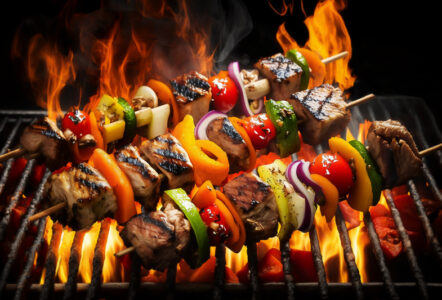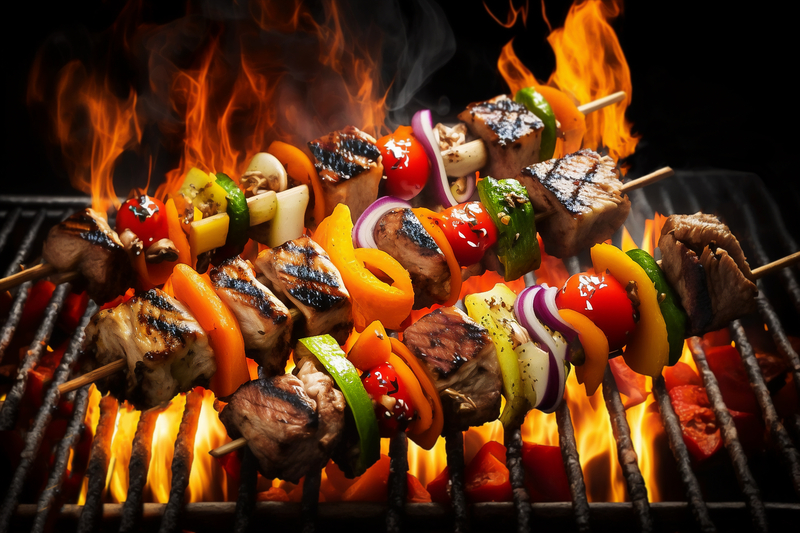
When it comes to grilling, enthusiasts often debate whether charcoal grilling truly offers a superior taste compared to gas grills.
Charcoal grilling is widely believed to provide a richer, smokier flavor that many food lovers find appealing.
This is due to the combustion of the charcoal, which releases aromatic compounds that infuse the food.
While the allure of charcoal grilling lies in its unique taste, it also demands a bit more attention and skill.
Choosing charcoal means embracing the art of adjusting vents and managing ash, but for many, the flavor payoff is well worth the effort.
Gas grills, although convenient and consistent, offer a different experience that some say lacks the depth of flavor charcoal provides.
Flavor preferences are personal, and both grilling methods offer distinct experiences.
For some, the decision comes down to the convenience of gas versus the flavorful nuances imparted by charcoal.
Balancing taste and ease often fuels this ongoing debate.
The Science of Flavor and Grilling
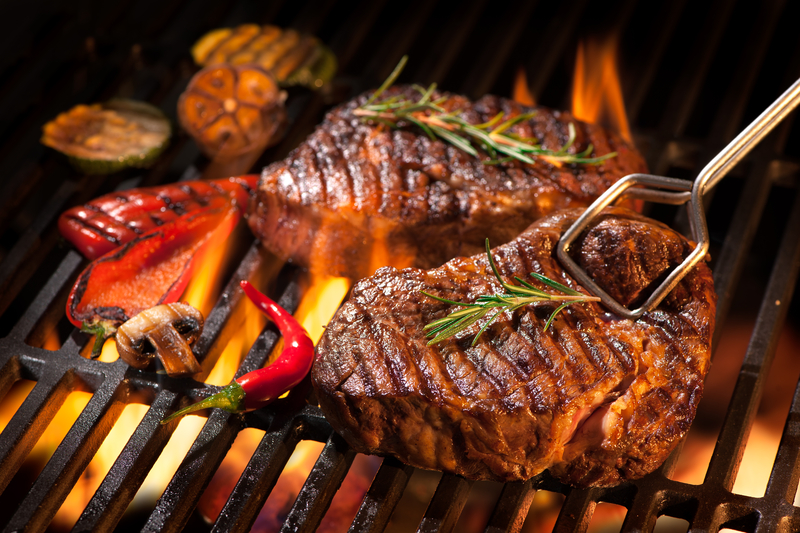
Grilling transforms foods, influencing their flavor profiles in various ways.
The type of grill and the cooking method both play crucial roles in developing distinct tastes.
Flavor Profiles: Charcoal vs Gas
Charcoal grilling enhances flavors differently compared to gas grilling.
Charcoal produces higher heat and allows flavors to intensify, often resulting in a more pronounced and complex smoky flavor.
This process involves the formation of volatile compounds that interact with the meat.
Charcoal also creates aromatic compounds like guaiacol, contributing to the unique taste that many associate with traditional grilling.
Charcoal tends to form a crust on the food due to higher temperatures, while gas grills provide more consistent heat.
This crust can enhance the flavor profile by adding texture and depth.
Influence of Smoke on Taste
Smoke significantly impacts grilling flavor, especially when using charcoal.
As wood and charcoal burn, they release smoky compounds, enriching the taste.
Components like guaiacol and syringol are key to this enhancement, providing the characteristic smoky flavor grill enthusiasts crave.
These compounds adhere to the food surface, influencing the overall taste.
Food science reveals that the longer food spends in the smoke, the more pronounced the flavor profile becomes.
Controlling smoke exposure allows cooks to achieve specific tastes, making smoke an essential factor in grilling.
Chemical Reactions During Grilling
Grilling involves various chemical reactions that enhance flavor.
The Maillard reaction is a primary contributor, occurring when amino acids and sugars react at high heat.
This creates browned, flavorful crusts on the meat.
Another important reaction is caramelization, affecting sugars in vegetables and fruits.
Both reactions generate complex flavors and aromas.
The intense heat from charcoal accelerates these processes, contributing to the unique taste many seek in grilled foods.
Comparing Charcoal and Gas Grills
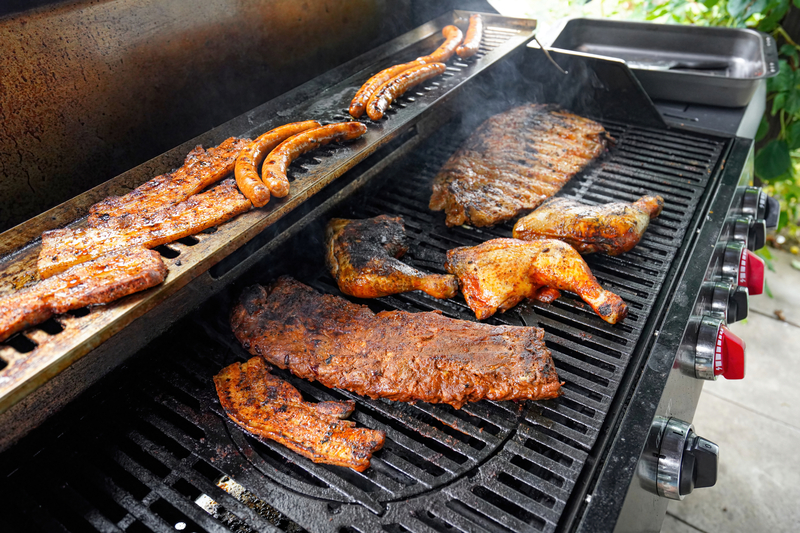
Charcoal and gas grills both have unique characteristics that cater to different preferences in grilling.
Key differences include temperature control, flavor outcomes, ease of use, and maintenance requirements.
Temperature Control and Cooking Time
Gas grills generally offer better temperature control compared to charcoal grills, allowing users to adjust heat levels quickly with a turn of the knob.
This precision facilitates consistent cooking results and suits recipes that require specific temperatures.
Charcoal grills, however, provide slower cooking times, and managing their heat involves adjusting vents and adding coals.
This can be tricky for those new to grilling but may offer a unique cooking experience for enthusiasts.
Searing and Meat Flavor Enhancement
A major reason many grilling enthusiasts opt for charcoal grills is the searing capability and the distinct smoky flavor they impart to meat.
The high heat of burning coals leads to excellent searing, producing a crust that enhances the flavor profile of steaks and other meats.
In contrast, gas grills typically lack the rich, smoky flavor that charcoal provides.
While they can achieve ample heat for searing, the flavor profile is often cleaner and might be less appealing to those seeking more traditional barbecue tastes.
Convenience and Ease of Use
Gas grills are typically more convenient and user-friendly than charcoal options.
Ignition is simpler, often with push-button starters or electronic ignitions, and the heat is instantly available.
This makes them suitable for quick weekday meals or gatherings.
Charcoal grills require more time to set up, as the coals must be lit and reach the proper temperature before cooking.
This preparation process can be seen as part of the ritual and experience for some grillers, adding to the enjoyment.
Maintenance and Clean-Up
The maintenance and cleaning of gas grills are often easier and quicker compared to their charcoal counterparts.
Gas grills typically involve cleaning grates and occasionally emptying grease traps.
Regular checks of gas lines and burners are necessary but straightforward.
Charcoal grills generally demand more effort in cleaning, with the need to dispose of ash and scrub grates after each use.
This aspect may deter some users but is manageable with regular upkeep and care.
Types of Charcoal for Grilling
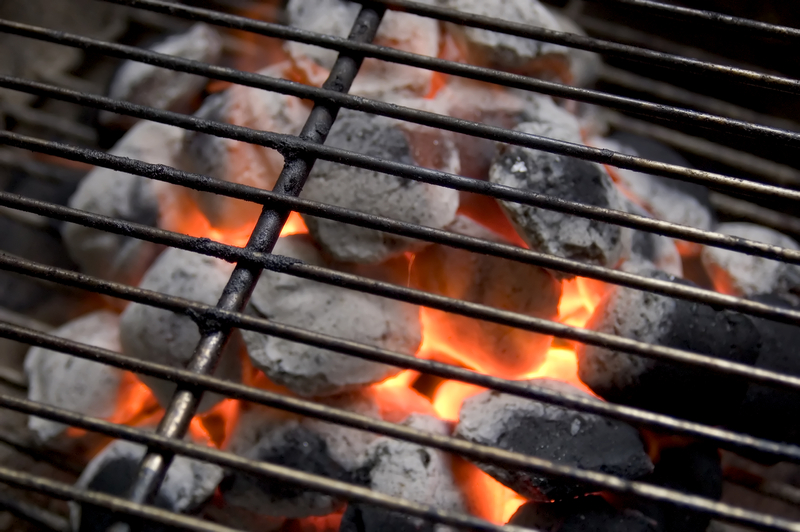
Charcoal comes in various forms, each offering unique benefits in grilling.
This section explores lump charcoal, briquettes, and incorporating wood chips to enhance flavor, providing a comprehensive view of their impact on taste and grilling performance.
Lump Charcoal and Its Characteristics
Lump charcoal is made from hardwood, such as oak, hickory, or maple, and retains the natural shape of the wood.
It is prized for its ability to reach high temperatures quickly, making it ideal for searing and quick grilling.
Because it contains no additives, it offers a clean burn and a smoky aroma that’s highly valued by grill enthusiasts.
Lump charcoal creates less ash compared to briquettes, simplifying cleanup.
Its irregular shapes require careful arrangement for distributed heat across the grill.
This type of charcoal is often chosen by those who prefer a more authentic grilling experience.
Briquettes and Manufacturing Process
Charcoal briquettes are made from sawdust, wood scraps, and other binders, compressed into uniform shapes.
They offer consistent burn times and even heat, making them popular for low-and-slow cooking methods and more predictable grilling.
Briquettes are often cheaper and more accessible than lump charcoal, which appeals to frequent grillers.
Manufacturers enhance briquettes with additional materials, like cornstarch and limestone, to improve durability and burn quality.
Some briquettes include lighter fluids for easier ignition, though it affects flavor slightly.
This uniformity and convenience suit casual grillers seeking reliability.
Adding Wood Chips for Enhanced Flavor
Wood chips can be added to charcoal grills to impart specific flavors to meats and vegetables.
Using a combination of lump charcoal or briquettes with soaked wood chips can introduce smoky flavors like hickory, apple, or mesquite.
This technique allows grillers to customize the taste profile suited to their preferences or the dish being prepared.
To use wood chips effectively, they should be soaked in water for about 30 minutes before placing them directly onto the charcoal.
This method ensures they smolder rather than burn, releasing their flavors gradually.
This addition is perfect for those looking to experiment with taste variations.
Accessories and Techniques
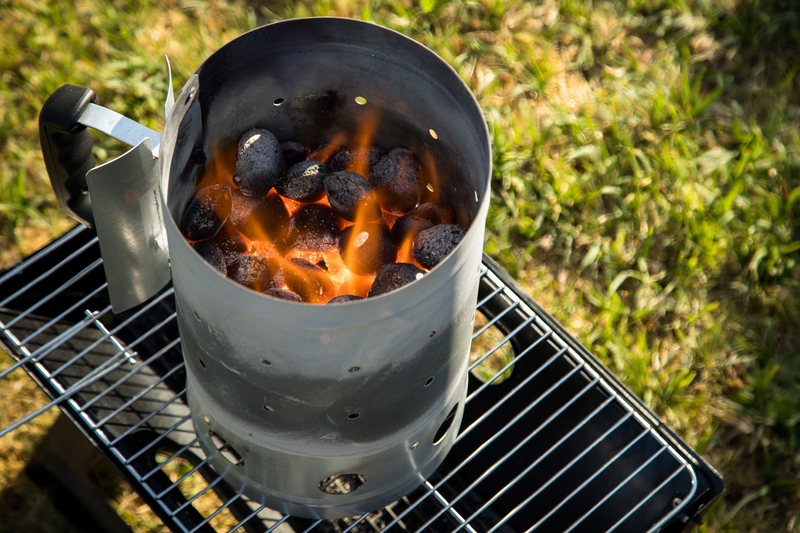
Grilling with charcoal offers numerous techniques and tools to enhance flavor and efficiency.
Utilizing a chimney starter and understanding direct versus indirect grilling can significantly impact the cooking process and outcomes.
While each method has its own set of advantages, they collectively contribute to a versatile grilling session.
Using a Chimney Starter for Charcoal Grills
 A chimney starter streamlines the process of getting charcoal ready for grilling.
A chimney starter streamlines the process of getting charcoal ready for grilling.
It’s a cylindrical metal device that holds charcoal above a compartment into which lighting materials are placed.
By using this technique, the cooking process begins more efficiently, as it ensures even heating of the charcoal.
To use a chimney starter, fill it with charcoal and place crumpled newspaper or a paraffin cube underneath.
Light the material and let the coals burn until covered with ash, usually about 15 minutes.
This method eliminates the need for lighter fluid, avoiding any chemical taste impacting the food.
The chimney starter achieves high heat, which is essential in many grilling techniques.
Grilling Techniques: Direct vs Indirect Grilling
Direct grilling involves placing food directly above the heat source.
It is ideal for searing steaks, burgers, and thin cuts of meat that require high heat and short cooking times.
This technique creates a desirable crust on the outside while keeping the inside juicy.
Adjusting the vent and lid placement can further control the heat intensity during the grilling session.
Indirect grilling is best for larger or tougher cuts that need slower cooking over lower heat.
It involves arranging charcoal on one side of the grill and cooking the food on the opposite side.
This method resembles oven-roasting and allows for even cooking without drying out the food.
It’s particularly effective for whole chickens, ribs, and briskets, requiring a more prolonged cooking process.
Health and Environmental Considerations
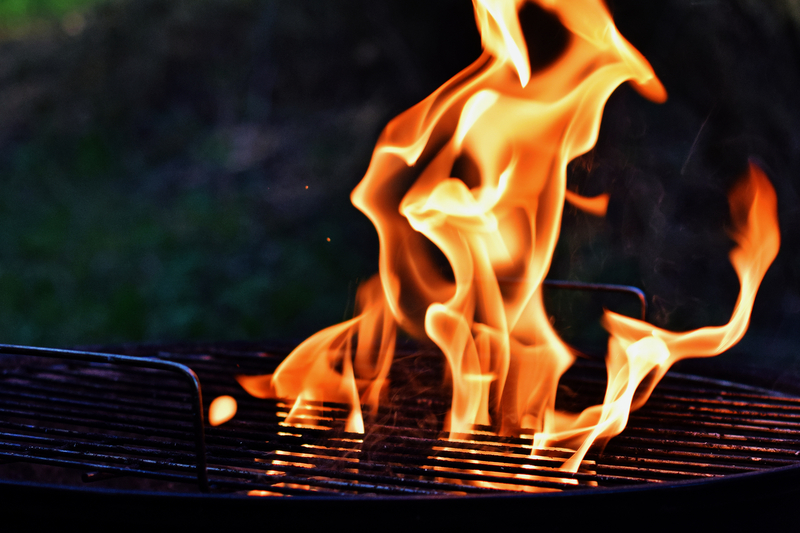
The impact of grilling on health and the environment can vary.
Factors include fuel types, emissions, and safe practices.
Different grilling methods may release substances like carcinogens.
Emissions and Fuel Sources
Choosing between propane, natural gas, and charcoal affects the grill’s emissions.
Charcoal BBQ grilling often produces higher levels of carbon monoxide and particulate matter.
This contributes to air pollution.
Propane and natural gas generally emit fewer harmful byproducts, making them cleaner options.
Natural Gas vs. Charcoal Emissions:
| Fuel Type | Carbon Emissions | Particulate Matter |
|---|---|---|
| Charcoal | Higher | Higher |
| Natural Gas | Lower | Lower |
The choice of fuel also impacts energy efficiency.
Gas grills tend to be more efficient than charcoal grills.
Environmental considerations may lead some to choose gas grilling to reduce their carbon footprint.
Carcinogens and Safe Grilling Practices
Grilling, particularly with charcoal, can produce carcinogens like polycyclic aromatic hydrocarbons (PAHs) and heterocyclic amines (HCAs).
These compounds form when meat juices drip onto hot coals, creating smoke.
The smoke carries substances that may adhere to the food.
To minimize exposure, it’s recommended to use safe grilling practices.
These include precooking meat, trimming fat to reduce drippings, and turning food frequently.
Marinating meat can also reduce the formation of harmful substances.
Safe practices help mitigate potential health risks associated with consuming food cooked on a charcoal barbecue.
Awareness and adjustments in grilling techniques can contribute to safer grilling experiences.
Economic and Practical Aspects of Grilling
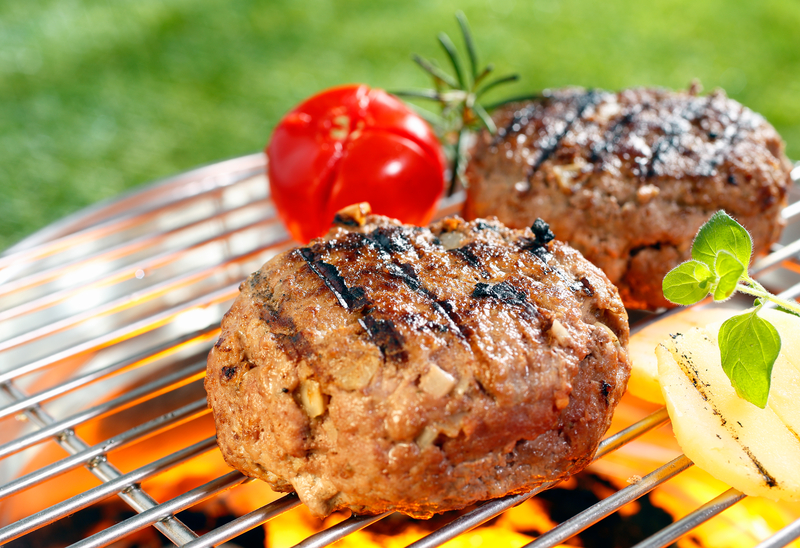
Grilling can be influenced by financial investment and logistical considerations.
Different types of grills present varying expense levels and practical benefits.
Initial Costs of Setup
When considering a new grill, initial costs can be significant.
Charcoal grills are generally more affordable than gas grills, often available for under $100, whereas gas grills can range from $200 to $1,000 or more, depending on size and features.
These upfront costs impact budgeting decisions.
Accessories also contribute to the initial investment.
Charcoal grills may require chimney starters, while gas grills often need propane tanks.
It’s worth noting that charcoal and propane refills add to ongoing costs, influencing the choice between charcoal and gas in the long run.
Long-Term Value and Budget Considerations
Long-term expenses include fuel usage and maintenance.
Charcoal tends to be less expensive per use but requires manual lighting and cleaning, potentially increasing maintenance time.
In contrast, gas grills, though more expensive initially, offer convenience in operation.
For those grilling frequently, gas grills may provide better long-term value.
They heat up quickly and offer temperature control, which conserves fuel over time.
Meanwhile, the choice must align with the user’s budget, and grilling frequency, factoring in both fuel costs and personal time commitment for preparation and cleanup.
Culinary Experience and Tradition
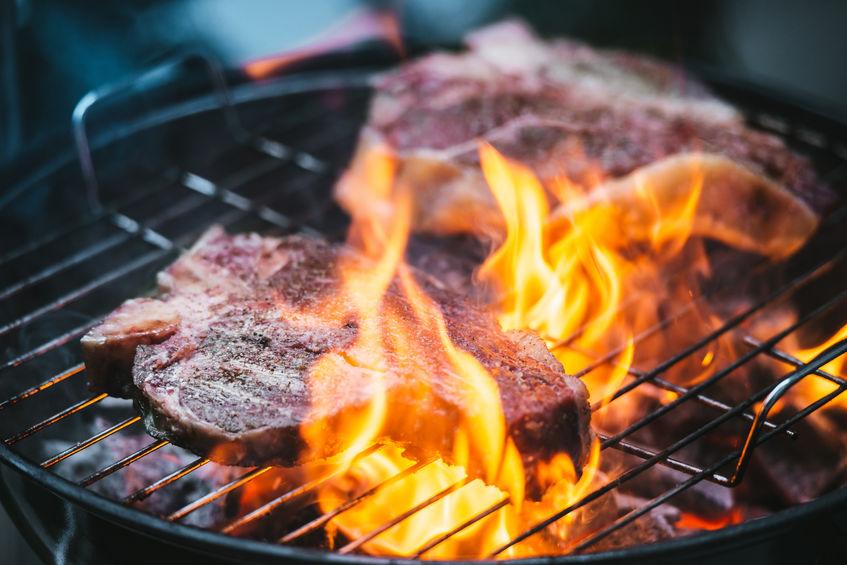
Grilling with charcoal isn’t just about flavor; it’s steeped in cultural practices and the art of traditional cooking.
Across different communities, charcoal barbecue represents a rich heritage and ongoing evolution in techniques and tools.
Traditional Barbecue and Cultural Significance
Charcoal barbecuing has deep cultural roots that vary around the globe.
In the American South, barbecue is a communal event, often marking celebrations and gatherings.
Each region boasts unique flavors, from tangy and spicy to sweet and smoky, showcasing local traditions.
Beyond flavor, the act of grilling outdoors is a ritual of family and social bonding.
Many cultures view barbecue not merely as a cooking process but as an essential part of their culinary identity.
Evolution of Grilling Techniques and Equipment
Grilling techniques have transformed significantly with technological advancements and changing tastes.
Charcoal remains a staple, prized for imparting a particular smoky flavor that gas grills often struggle to replicate.
However, new equipment is now integrating traditional methods with modern conveniences.
Contemporary grills are designed to maintain classic grilling experiences while introducing efficiency and ease of use.
Built-in thermometers and adjustable vents allow for precise control, bringing a scientific edge to a traditional culinary practice.
Does Grilling with Charcoal Taste Better?
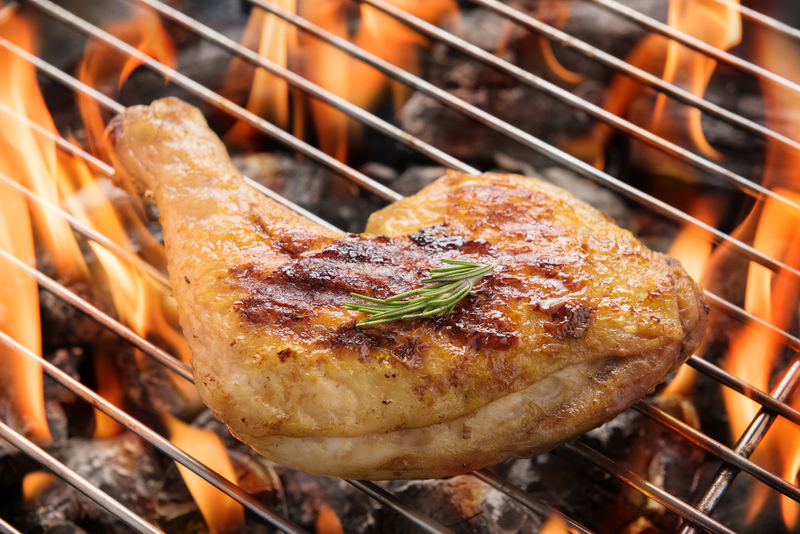
Charcoal grilling is often hailed for its unique flavor profile.
Enthusiasts argue that cooking over charcoal imparts a smoky taste that many find more appealing than gas grilling.
This flavor comes from the combustion of the charcoal itself and is often enhanced by adding wood chips to the fire.
The versatility of charcoal grills allows for both direct grilling and indirect cooking.
Some models include smokers, adding the option for smoking meats to infuse them with deep flavors.
This versatility can be a significant factor for those who enjoy experimenting with different techniques.
Precise Temperature Control is typically more challenging with charcoal grills compared to gas grills.
Maintaining consistent heat and making quick adjustments can require skill.
This aspect can be crucial for tasks like searing meat, which benefits from high, consistent temperatures.
Cornell University studies support that different cooking methods can influence flavor perception.
While personal preferences play a significant role, many find that the smoky aroma from charcoal can enhance the taste experience.
In comparing charcoal vs. gas, it often boils down to preference.
Each method has its strengths, and the choice may depend on what the user values more: convenience and control or flavor and versatility.
Regardless, both have their place in the culinary world and continue to be popular among grilling enthusiasts.
The Perfect Grills for Every Preference
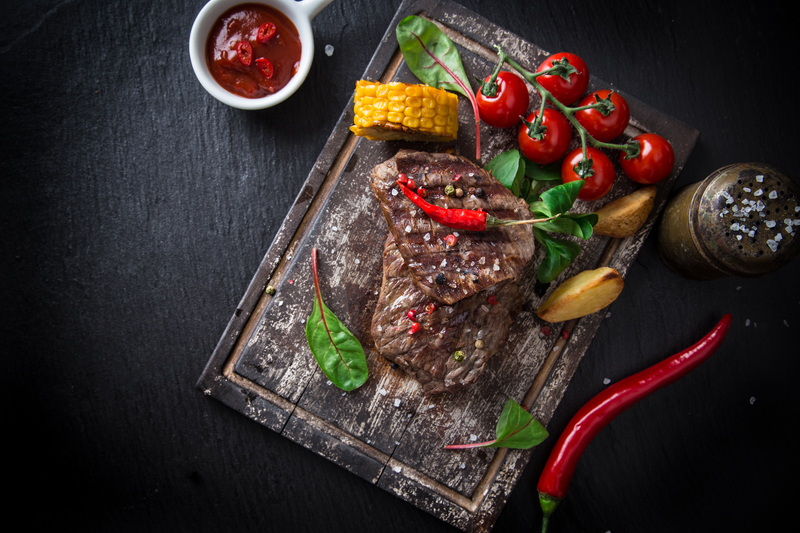
 When it comes to charcoal grilling, the Weber Original Kettle Premium Charcoal Grill stands out as a top choice.
When it comes to charcoal grilling, the Weber Original Kettle Premium Charcoal Grill stands out as a top choice.
Its 22-inch cooking surface, durable porcelain-enameled construction, and one-touch cleaning system make it a fantastic option for both beginners and seasoned grillers.
Whether you’re just starting out or perfecting your craft, this grill delivers reliable performance for everything from quick sears to slow smoking.
 For those who prefer the convenience of gas grilling, the Weber Spirit II E-310 Gas Grill is a great alternative.
For those who prefer the convenience of gas grilling, the Weber Spirit II E-310 Gas Grill is a great alternative.
It offers consistent heat, easy ignition, and ample cooking space, making it perfect for hassle-free grilling without compromising on flavor.
Ultimately, whether you choose the rich, smoky flavor of charcoal or the ease of gas grilling, selecting the right grill depends on your personal preferences and cooking style.
Both options offer excellent performance to help you create mouth-watering meals.

